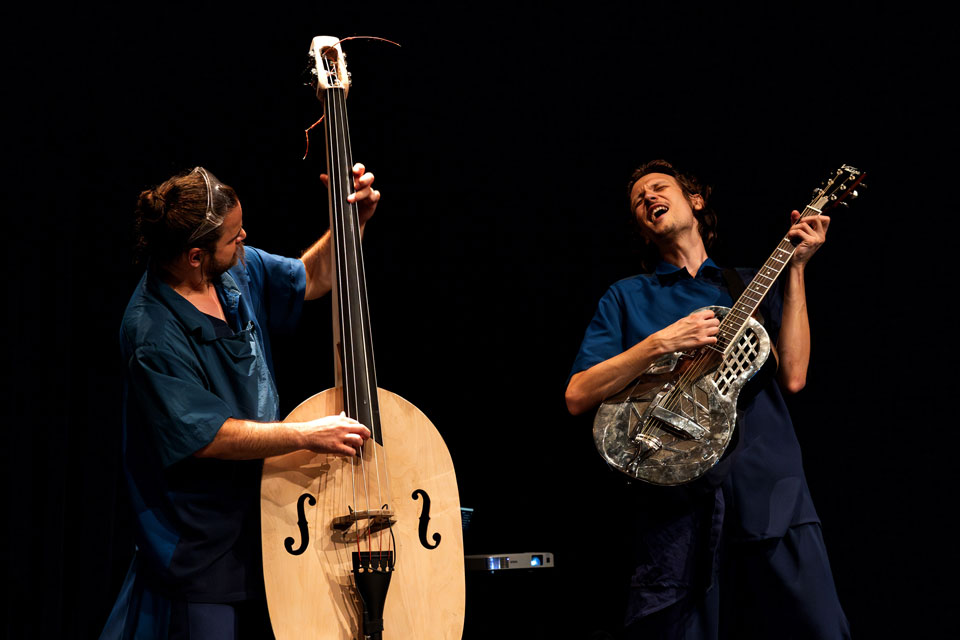Peter Kus is known as both a musician and puppeteer, and his performances often feature inventive instruments of his own design. His latest piece, Bloop, co-directed and performed alongside Filip Šebšajević and Gašper Lovrec, was no exception. Presented by the Kuskus Institute and Art Production Ljubljana (Slovenia) on the penultimate day of the 4th International Novi Sad Theater Festival 2025 (Youth Theater, Novi Sad, May 10), the performance was a visually engaging and sonically rich experience.
The importance of water—essential not only to human life but to the entire planet—is a message that hardly needs repeating. Yet human negligence continues to pose serious threats, and Bloop aims to address this with humor and creativity. In a lab-like setting (clever and imaginative set design by Primož Mihevc, atmospheric lighting by Borut Bučine), a strange aquatic creature named Bloop suddenly appears. His arrival brings a collection of plumbing-related objects to life (playful and inventive puppets by Katarina Cakova), prompting three scientists—dressed in charming costumes by Iztok Hrga—to explore water in all its forms. The narrative, shaped by Maria Giulia Campioli, attempts to weave these elements into a cohesive story.
While the scenes are creatively staged and often delivered with humor, the overarching narrative lacks clarity. The connection between Bloop and the scientists’ experiments feels underdeveloped, making the ecological message and character dynamics occasionally hard to follow. In casual terms, the story doesn't quite "hold water."
However, where Bloop truly shines is in its soundscape. As in Kus’s previous work, the performance is filled with dazzling musicianship. Instruments made from everyday objects—plastic buckets, watering cans, metal tubs, even pumpkin shells—are transformed into sources of music, often using simple additions like pipes or strings. These sound experiments, both whimsical and precise, captivated the audience, particularly the younger viewers.
Post-show discussions revealed that children were most drawn to the physical and mechanical properties of water and the playful musical inventions. They responded enthusiastically to the hands-on, scientific feel of the performance, which speaks volumes about the piece’s educational potential.
One can’t help but wonder whether Bloop might have been more powerful had it embraced its strengths—instrument-building, music-making, and playful scientific exploration—rather than striving to fit those elements into a loosely defined narrative. Still, the performance offers a rich sensory experience rather than opens the door for children to think about ….
Olga Vujović




